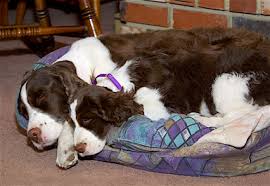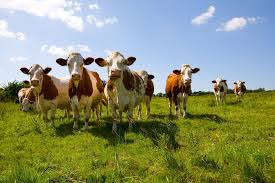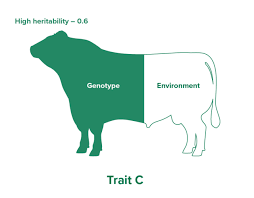The concept of genetic parameters, which includes heritability and repeatability, is of great significance to animal breeders. Understanding these parameters allows breeders to improve livestock performance through selection and management.
Heritability refers to the proportion of observed variation in a trait that is due to genetic factors, while repeatability relates to an animal’s ability to reproduce the same trait consistently over time.
Read Also: How to Grow, Use and Care for Whitetinge Sedge Grass (Carex albicans)
Heritability

Heritability is the proportion of the total phenotypic variance that results from genetic variance. This parameter plays a crucial role in estimating the breeding value of animals and helps in analyzing the contributions of genetic and non-genetic factors to observed traits.
Heritability measures how closely offspring resemble their parents in a specific trait. A trait with high heritability implies that animals with superior performance are likely to produce offspring with similar performance.
It is important to note that heritability is a population measure and not applicable to individuals. It may vary across populations and environments without any underlying genetic changes.
Types of Heritability
1. Heritability in Broad Sense (H²)
This is the proportion of phenotypic variance attributed to all genetic effects, including additive, dominance, and epistasis.
Formula:
H² = VG / VP = (VA + VD + VI) / VP
Broad-sense heritability expresses the relationship between phenotypic values and genotypic values.
2. Heritability in Narrow Sense (h²)
This is the proportion of phenotypic variance due to additive genetic effects alone.
Formula:
h² = VA / VP = VA / (VA + VD + VI + VEP + VET)
Narrow-sense heritability measures the relationship between phenotypic values and breeding values. It reflects how much of the trait can be passed from parents to offspring due to additive genes.
3. Importance of Heritability
1. Selection Accuracy – Traits with high heritability allow for more accurate selection, leading to greater genetic progress.
2. Prediction of Breeding Values – Heritability is essential in estimating an animal’s breeding value using its phenotypic performance:
BV = h² (Pi – P), where Pi is the animal’s performance, and P is the population mean.
3. Management Decisions – Traits with high heritability (e.g., growth rate) can be improved through selection. Traits with low heritability (e.g., fertility) require environmental improvements such as better nutrition and care.
Heritability values are categorized as:
Low: 0–20%
Moderate: 21–39%
High: 40% and above
Read Also: How to Grow, Use and Care for Whitegrass (Leersia virginica)
Repeatability

Repeatability, denoted as R, is the proportion of phenotypic variance due to permanent genetic and environmental effects. It estimates the consistency of a trait across an animal’s lifetime and the relationship between repeated records for the same trait.
Formula:
R = (VA + VD + VI + VEP) / VP
Repeatability indicates the strength of the relationship between a single performance record and the animal’s overall producing ability.
Importance of Repeatability
1. Prediction of Future Performance – High repeatability allows for reliable prediction of future performance based on current records.
2. Culling Decisions – When repeatability is high, animals with poor performance can be culled based on their first record. For traits with low repeatability, multiple records are required for accurate culling decisions.
Repeatability Estimates for Selected Traits in Livestock
| Species | Trait | Repeatability (R) |
|---|---|---|
| Cattle (Dairy) | Milk yield | 50% |
| Percentage fat | 60% | |
| Cattle (Beef) | Service per conception | 15% |
| Calving interval | 15% | |
| Calving date (dam trait) | 35% | |
| Birth weight (dam trait) | 20% | |
| Weaning trait (dam trait) | 40% | |
| Body measurements | 80% | |
| Sheep/Goat | Number born | 15% |
| Birth weight (dam trait) | 35% | |
| 60-day weaning weight | 25% | |
| Poultry (Layer) | Egg weight | 90% |
| Egg shape | 95% | |
| Shell thickness | 65% |
This article has explained the concept of genetic parameters, specifically heritability and repeatability. Both broad and narrow sense heritability were discussed, along with their role in animal selection, breeding value estimation, and management.
Repeatability, on the other hand, aids in predicting future performance and making culling decisions. Understanding these parameters is essential for effective animal breeding and genetic improvement.
Do you have any questions, suggestions, or contributions? If so, please feel free to use the comment box below to share your thoughts. We also encourage you to kindly share this information with others who might benefit from it. Since we can’t reach everyone at once, we truly appreciate your help in spreading the word. Thank you so much for your support and for sharing!

